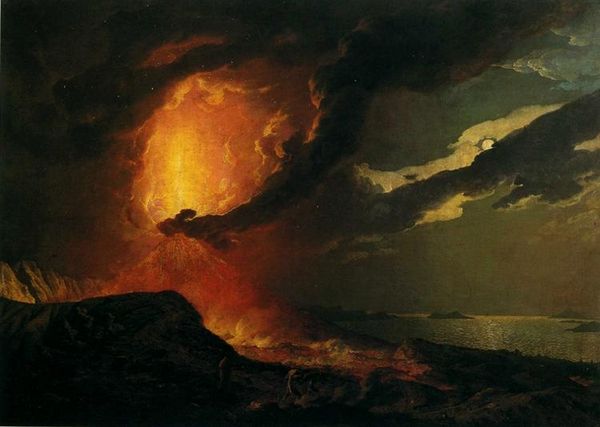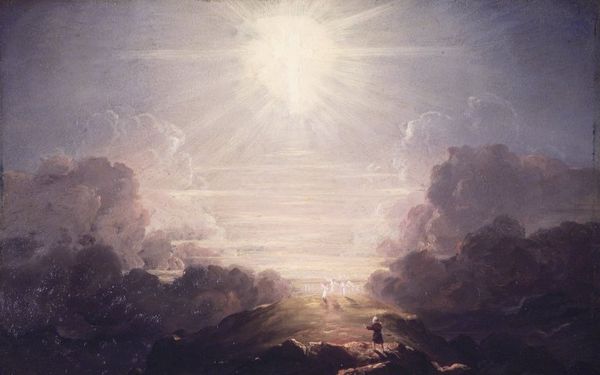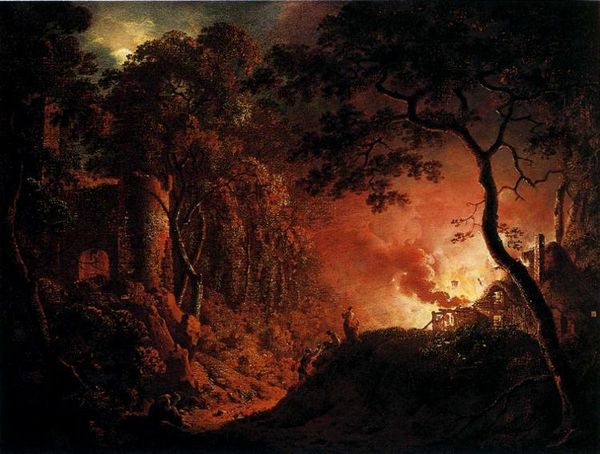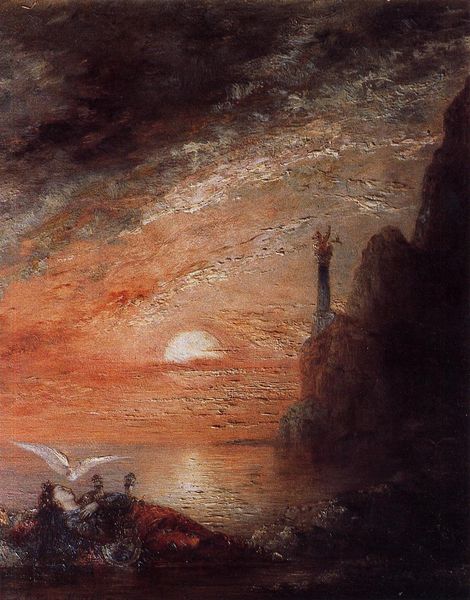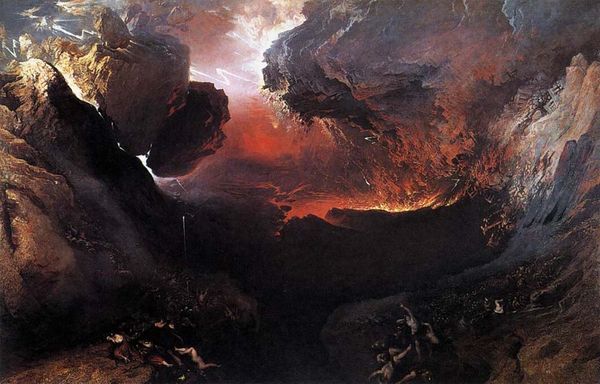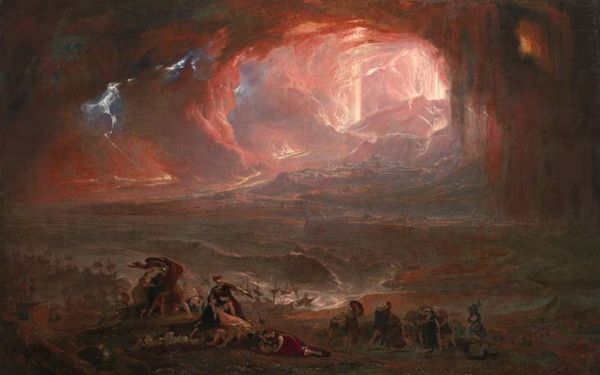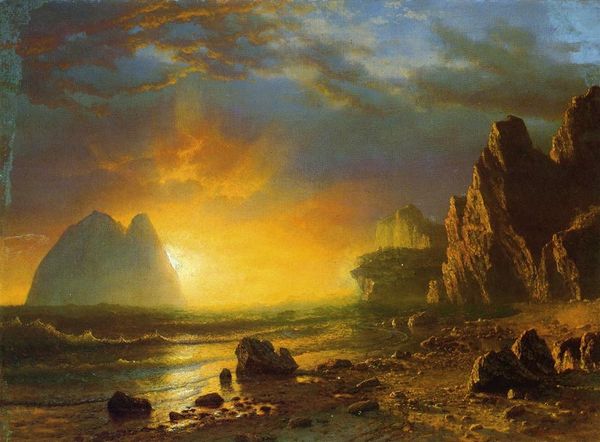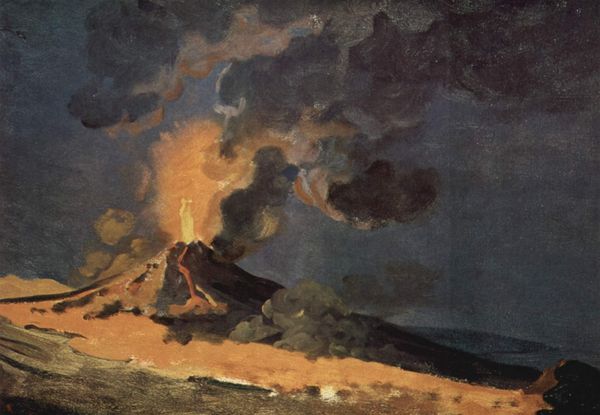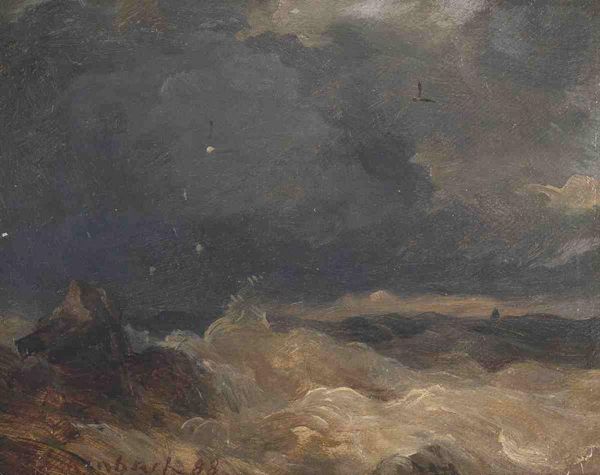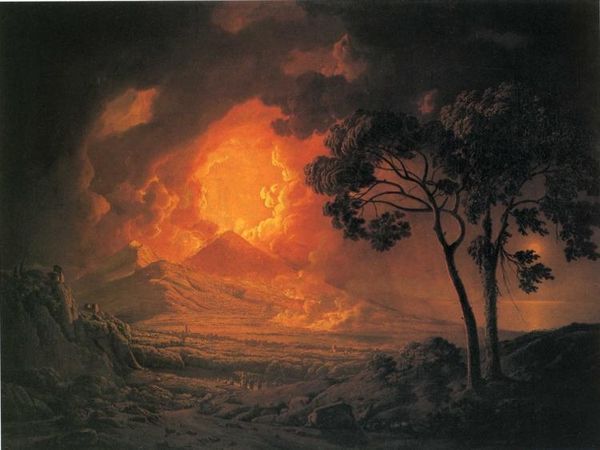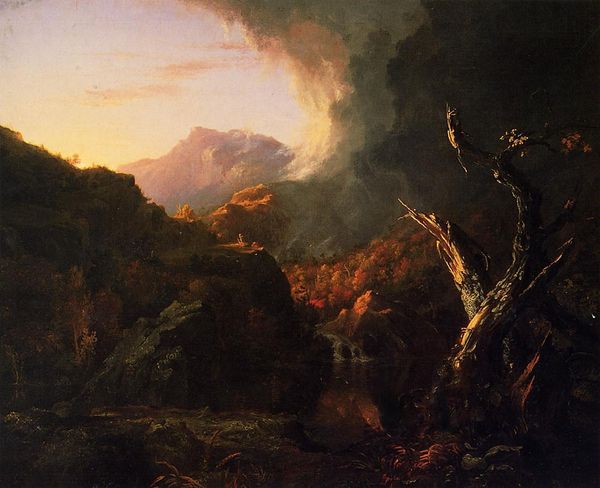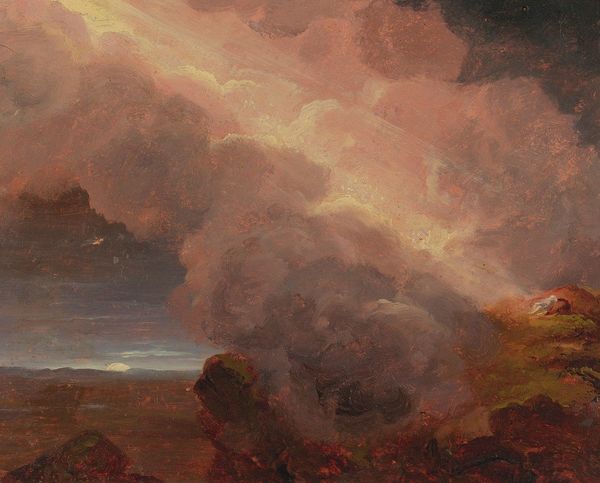
Study for The Pilgrim of the Cross at the End of His Journey 1846
0:00
0:00
painting, oil-paint
#
fantasy art
#
painting
#
oil-paint
#
landscape
#
fantasy-art
#
figuration
#
romanticism
#
mountain
#
men
#
history-painting
Copyright: Public domain
Thomas Cole made this oil study for "The Pilgrim of the Cross at the End of His Journey" in the United States, sometime before his death in 1848. Cole was interested in the role of the artist in shaping moral and spiritual values, and this painting reflects the Protestant culture of nineteenth-century America. Here, the image creates meaning through visual codes and cultural references. The pilgrim, the cross, and the angels are obvious symbols of Christian belief. Cole’s painting is not simply an expression of personal piety. It’s also a comment on the social structures of his time, reflecting the cultural values of the institutions that supported and promoted his work. Cole's art was self-consciously conservative, seeking to reinforce traditional values in a rapidly changing society. As historians, we can use a variety of research resources to understand the social and institutional contexts of art like this, including letters, diaries, newspapers, and church records. Ultimately, this reminds us that the meaning of art is contingent on its social and institutional context.
Comments
No comments
Be the first to comment and join the conversation on the ultimate creative platform.
